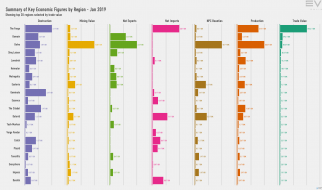
(Self Portrait with Model, 1896 by Anders Zorn)
Anders Zorn (18 February 1860?22 August 1920), was a Swedish painter known in the late end of the classical era. Besides for being recognized from his brilliant paintings executed with masterful brushwork, to this day his use of a limited palette that many artists still employ in high regard is simply coined as ?The Zorn Palette?.
This palette is no doubt rich in history. With these four basic pigments (yellow ochre, cadmium red, ivory black, and white of course), one could trace back this influenced palette from ancient one in which was known as ?The Palette of The Apelles?.
With these simple base colors of yellow, red, and black (which functions as a blue in comparison), I can understand that to the beginner the near limitless potential this palette can bring remains elusive.

Pictured here is a Zorn Palette chart created by Michael Lynn Adams. As you can see here, the mother piles are laid in across the top and bottom (mixtures of paint from yellow to red to black and so forth without any white), and then from those piles white has been increased gradually towards the center. These piles of paint that increase with white that you mix from each individual mother pile are called value strings.
In considering how I was taught in the atelier, this palette in particular is excellent for the rendering of flesh/the figure. However, with gaining experience on can see that it can be applied to nearly anything. While initially the struggles in handling a palette of this nature can be difficult, I can promise that in the long run the persistence will pay off many times over.
It certainly does take quite the amount of practice not only in the paint handling of itself but with the strengthening of the eye in the ability to target, isolate, and interpret the infinite amount of subtle nuances in chroma, temperature, and value.
If you think about it, when you boil down the act of drawing and painting, it is basically critical thinking at its finest. When conceptually approaching color and how light behaves, constantly asking yourselves these three questions I promise you will take you far. They are:
Does it need to be lighter/darker?
Does it need to be warmer/cooler?
Does it need to have more chroma/less chroma?
I personally have used this palette for a very very long time and I find it to be continually rewarding. No matter how much I can venture off, modify and explore, I can retain confidence and solace in knowing that I have a firm foundation in painting to fall back on. I find it beautiful in it?s simplicity and stability, and yet there is beauty in that it can act as a wonderful springboard into highly chromatic palettes.
Please feel free to let me know what you think?
Below is a painting I finished not too long ago with the Zorn palette religiously used.

Namu Myoho Renge Kyo18″ x 24″oil on linen
Thanks for reading Everyone!
-James Hansen
jameshansenpaintings.com


